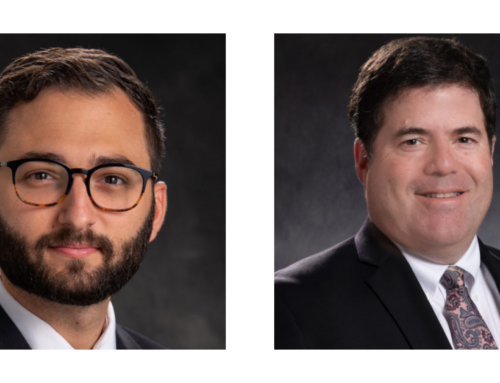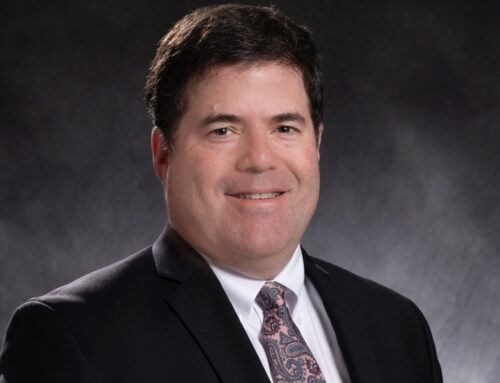By: Scott Borsack
Now that you have submitted your application for a Paycheck Protection Program (“PPP”) loan and your financial institution has accepted the application, it’s time to start planning for spending the loan proceeds. In order for the “loan” to be forgiven, a borrower must spend the proceeds on eligible expenditures, which consist of payroll costs, utility charges, rent and interest on loans, during the 8 weeks following the origination of the loan. Most borrowers will use a majority of the proceeds on payroll costs for their employees and the Small Business Administration has requested that 75% of the proceeds be spent on payroll costs in order for the loans to qualify for forgiveness.
There are four ways that eligibility for forgiveness of the loan can be challenged:
- The borrower has fewer employees during the period after the loan than as compared to before the loan;
- Wages for individual employees paid after the loan are less than wages paid to the same employees prior to the loan origination;
- The borrower fails to spend loan proceeds within 8 weeks of the loan origination, and before June 30, 2020; or
- The proceeds are spent on other expenditures other than payroll costs, rent, utilities or mortgage interest charges.
As to the size of the workforce, the borrower will be asked to demonstrate that the number of full time equivalents (or FTE’s) after the loan originates is no less than the number of FTE’s in one of two periods prior to the loan origination date. For this purpose, an FTE is either an employee who works more than 30 hours in a week, or two or more part time employees who together work for more than 30 hours in a week. The CARES Act requires that a borrower compute the average number of FTE’s per month during each pay period in the two month period following origination of the loan, referred to as the “covered period.” The average FTE’s during the covered period is divided by the average number of FTE’s per month during the period from February 15, 2019 through June 30, 2019 or January 1, 2020 through February 29, 2020. Borrowers would be advised to choose one period or the other depending on the lower average number of monthly FTE’s derived in each, making it easier to demonstrate that at least as many FTE’s were paid after the loan originated. It should be noted that for this purpose only, all employees are considered, regardless of their wages. There is no difference in this test between an employee who is paid at a rate over $100,000 annually, and one paid at a lower annual rate.
If the post-loan average monthly FTE’s are less than the pre-loan average monthly FTE’s, the amount of the loan forgiveness for which the borrower is otherwise eligible will be reduced by the same percentage as the reduction in the average monthly FTE’s. To derive the reduction percentage, the pre-loan average monthly FTE’s are divided by the post-loan average monthly FTE’s to derive a percentage. If the post loan FTE’s are 30 and the pre loan FTE’s are 40, 30 / 40 yields a percentage of 75%. Since post-loan average monthly FTE’s are 25% less than pre-loan FTE’s, the amount of the loan eligible for forgiveness is reduced by 25%. It should be noted here that this inquiry looks to head count only. If the borrower has five employees pre-loan, employs A, B, C, D and E who all work full time, and after the loan is made hires F and G and fires A and B, the borrower still has five FTE’s after the loan and would not suffer a reduction of potential forgiveness. Identity of the FTE’s does not matter here.
Unlike the head count inquiry, the second test looks to the wages of each individual employee. The identity of employees is important here. Any employee who was employed during the full quarter immediately prior to the start of the covered period has to be paid during the covered period at least 75% of what he or she was paid during the full quarter immediately prior to the covered period. The language here is a bit imprecise in that the borrower is asked to compare a period of three months (the quarter immediately prior to the covered period) to a period of two months (the covered period which starts after the loan). Since the reduction appears to be intended to be performed on a dollar for dollar basis, I suggest that some clarification will be required here because the calendar quarter prior to the loan will necessarily see an employee being paid a lot more than the two months following the origination of the loan. Unlike the determination of FTE’s in the test above, here we only consider employees who during 2019 were paid at a rate which would result in annual compensation of less than $100,000. It should be noted here that if a borrower engaged in the behavior noted above, replacing two employees who were employed in the quarter before the loan, terminated two of those employees and hired two new employees, the wages of the two fired employees would reduce the amount of the potential forgiveness because they received no compensation in the post-loan period.
The two employee tests – head count and wages – are subject to an exception. If there is a reduction in the number of FTE’s during the period which begins on February 15, 2020 and ends on April 27, 2020 (the date which is 30 days following the date of enactment of the CARES Act) and no later than June 30, 2020 the borrower re-hires the individuals who were terminated, the workforce test will be deemed to have been satisfied. Further, if a wage reduction is eliminated no later than June 30, 2020 by increasing the wage rates of affected employees, the wage reduction test can be disregarded as well. Specifically, if wages were reduced during the period which begins on February 15, 2020 and ends on April 27, 2020, but restored to the rate which existed on February 15, 2020 and the restoration occurs on or before June 30, 2020, the wage reduction test as to such employees whose salaries were restored can be ignored.
Dates are important here too. A borrower has to spend the proceeds of the loan in a timely manner. Proceeds have to be spent on eligible expenses within 8 weeks of the date on which the loan originates. Additionally, the proceeds have to be spent on or before June 30, 2020. It will be hard, therefore, to spend the proceeds on permitted expenditures if the loan originates late in May.
Most importantly, the amount of the forgiveness depends chiefly on how the borrower spends the loan proceeds. Funds must be spent on payroll costs, utilities, rent and interest on mortgages secured by business property. Eligible payroll costs include employee salary, tips, vacation and other leave, payments for dismissal or severance, health insurance benefits, retirement benefits and state and local taxes assessed on the compensation of the employee. Basically this includes the gross wages of the employee and the other payroll costs which the employer incurs not including federal taxes for FICA, Medicare, and FUTA. Forgiveness is limited to the amounts which a “lender reasonably expects a borrower to expend during the” 8 weeks which follow loan origination. These costs should be incurred and paid during the covered period. It is not clear whether the borrower can seek forgiveness only for amounts paid that are attributable to the 8 week period following the loan or if amounts attributable to future periods can be anticipated and paid to support forgiveness. It is interesting to note that payments of mortgage interest are limited to the amounts due during the covered period and that interest cannot be prepaid. No such limitation is noted for rent or payroll costs. A borrower may be able to use loan proceeds for a payroll period beyond the covered period and still secure forgiveness for the payment of that amount.
Loan forgiveness is not automatic. Rather the borrower has to apply to the lender which issued the loan for forgiveness of the amount borrowed. The borrower must provide documentation to the lender to support the request for forgiveness that addresses the following:
- Verifies the number of FTE’s on the payroll and the rates of compensation prior to the origination of the loan and during the covered period after the loan. This should include federal and state payroll tax filings and state income, payroll and unemployment insurance filings;
- Cancelled checks or statement of account showing payments on mortgages, leases and utilities charges;
- A certification from the borrower that the documents are true and correct, that the amount requested for forgiveness was expended on eligible expenses, and
- Any other documentation which the Small Business Administration may require.
There can be no forgiveness without submission to the lender of the required documentation. The lender has 60 days to process the request. The amount forgiven is not subject to income taxation. It is important to note that the first payment of a PPP loan is not due until 6 months after the loan originates. Under the Act, therefore, a borrower who timely expends the funds and applies for forgiveness should not be making a payment of principal or interest to the lender.
The PPP can be a lifeline to a business looking to maintain its workforce. If the recipe for forgiveness is carefully followed, borrowers can convert loans into government grants. The program is worth the effort.
Scott Borsack is a business attorney and partner in the Lawrenceville, NJ law firm of Szaferman, Lakind. He can be reached at 609-275-0400 or via email at sborsack@szaferman.com.
For more COVID-19 related resources and articles visit our COVID-19 Resource Center.
The foregoing is intended for general information purposes and is no substitute for specific legal advice.






